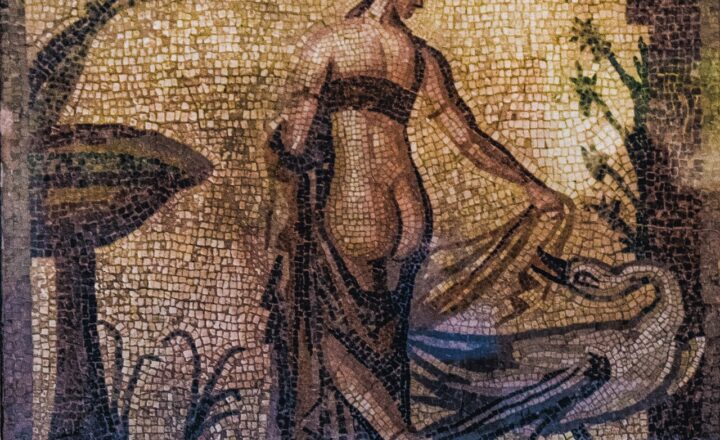Why Certain Historical Mysteries Continue to Puzzle Experts Today
November 16, 2024

History is replete with events, figures, and artifacts that continue to spark intrigue and debate. While historians and archaeologists work diligently to piece together the past, there are certain enigmas that persist, eluding explanations and drawing the fascination of experts and amateur historians alike. This article will explore some of the most perplexing historical mysteries and delve into the reasons why they remain unsolved today.
1. The Enigma of the Great Sphinx of Giza
The Great Sphinx of Giza is one of the most iconic structures of ancient Egypt, yet its origins and purpose are shrouded in mystery. Standing guard near the pyramids, this colossal limestone statue features a lion’s body and a human head, believed by many to represent Pharaoh Khafre. However, several questions remain unanswered:
- Who exactly built the Sphinx? While many attribute it to Pharaoh Khafre, some scholars argue for other creators or even different timelines for its construction.
- What was its original purpose? Was it a religious symbol, a guardian, or a representation of power?
- Why is its face damaged? Theories abound, but no definitive explanation has been validated regarding the erosion and destruction of its features.
The Sphinx’s age, the erosion patterns on its surface, and the lack of substantial historical records contribute to the ongoing intrigue. Scholars debate ancient weathering, suggesting that the Sphinx is much older than the Pharaohs, leading to questions about lost civilizations and advanced technologies.
2. The Disappearance of the Roanoke Colony
In 1587, over a hundred settlers vanished from Roanoke Island, North Carolina, leaving behind only the word “CROATOAN” carved into a tree. This mystery has puzzled historians for centuries. By examining the various theories, we can see how elusive the truth remains:
- Integration with Native American Tribes? Many suspect the settlers may have merged with local tribes for survival. However, this remains unconfirmed, as evidence supporting such a claim has not been established clearly.
- Inhabitants evacuated? Some suggest the colonists could have departed to a different location, on their fate doubted due to insufficient documentation.
- Unforeseen calamities? The hardships of a new settlement, such as famine and drought, might have played a role in their demise. However, no final resolution clarifies what specifically happened.
The absence of concrete evidence, combed with the limited historical records from the era, renders Roanoke’s fate a compelling mystery that continues to intrigue historians and explorers alike.
3. The Identity of Jack the Ripper
One of the most infamous figures in criminal history, Jack the Ripper was responsible for a series of gruesome murders in London’s Whitechapel district in 1888. Despite numerous investigations and theories, the true identity of this assassin remains unknown. The fascination surrounding this mystery lies in:
- Vast array of suspects: Over the years, many names have been put forward, from local butchers to members of the royal family, each presenting compelling yet circumstantial evidence.
- Lack of forensic technology at the time: The investigative methods available in the 1800s were primitive, making it challenging to collect reliable evidence and convict a suspect.
- Cultural fascination: The Ripper case has inspired countless books, films, and theories which keep the public interested while also muddling the historical facts with fiction.
With new evidence constantly emerging, some theories fade while others gain traction, contributing to ongoing discussions about the real identity of Jack the Ripper.
4. The Nazca Lines: Geoglyphs of Peru
The Nazca Lines are a series of enormous geoglyphs imprinted in the Peruvian desert, some stretching up to 1,200 feet. This stunning spectacle consists of various shapes, including animals, plants, and geometric figures. Here are a few reasons why they remain an enigma:
- Purpose unknown: Numerous hypotheses exist regarding the lines, from astronomical calendars to ritualistic pathways, but no theory has gained universal acceptance.
- Construction methods: The techniques used to create these enormous designs, which can only be fully appreciated from the air, are still debated.
- Cultural significance: Understanding the motivations behind such monumental efforts remains elusive as the Nazca civilization left few written records to study.
The Nazca Lines capture the imagination and highlight the limitations of our understanding of ancient societies, leaving scholars and enthusiasts to speculate about their true meaning.
Conclusion: The Allure of Historical Mysteries
The persistence of these historical mysteries is a testament to humanity’s desire to understand the past. They challenge our perceptions, encourage critical thinking, and spark the imagination. In a world rife with information, there is something tantalizing about the unknown.
Experts may not always agree, and hard evidence may remain elusive, but the stories surrounding these mysteries inspire continuing research and debates. The mysteries of history remind us that, despite our advancements in knowledge and technology, there are still enigmas that sophisticates our understanding of the human experience.
As we uncover new details and develop modern tools to sift through ancient remnants, it is anticipated that some of these puzzling historical enigmas may one day be solved, while others may remain in the realm of speculation, keeping the dialogue alive for generations to come.








